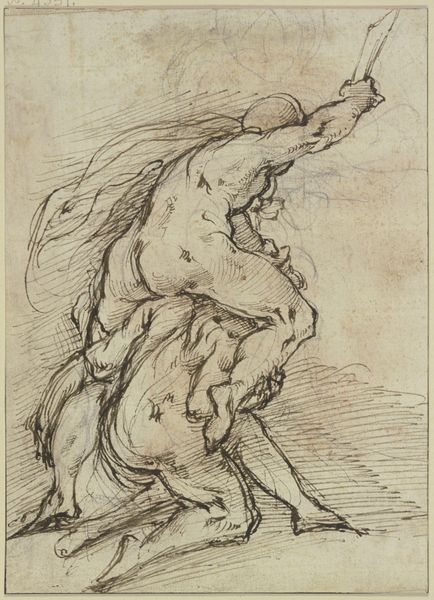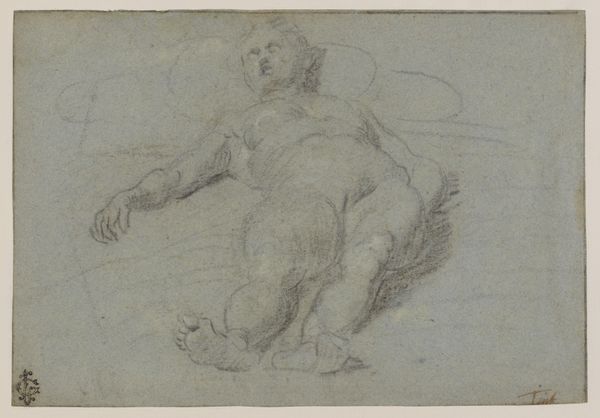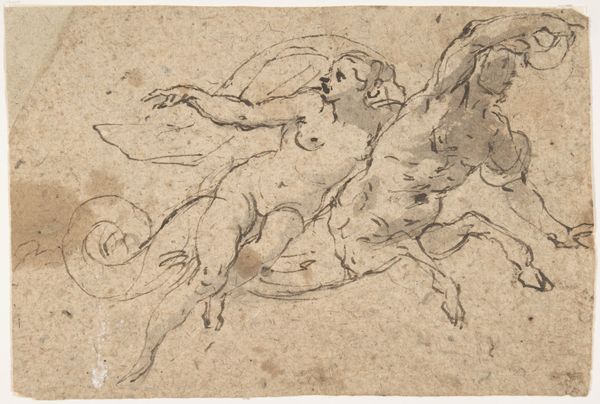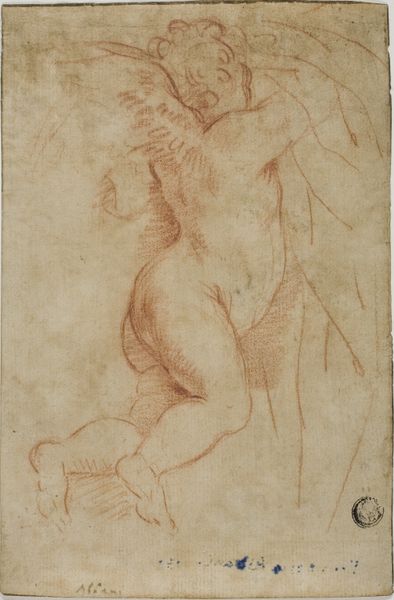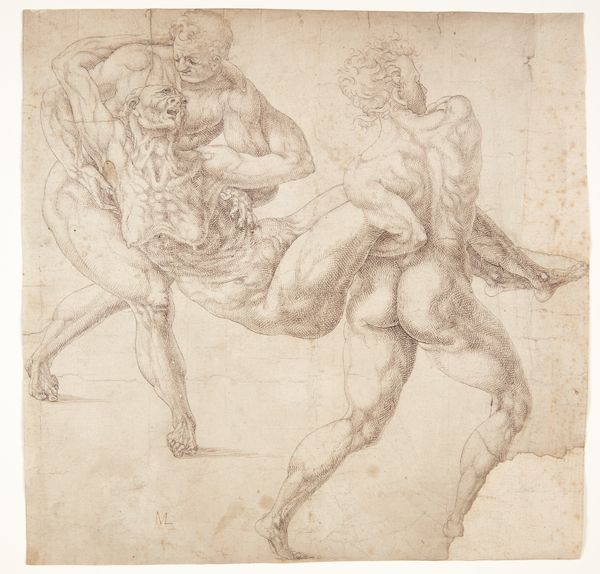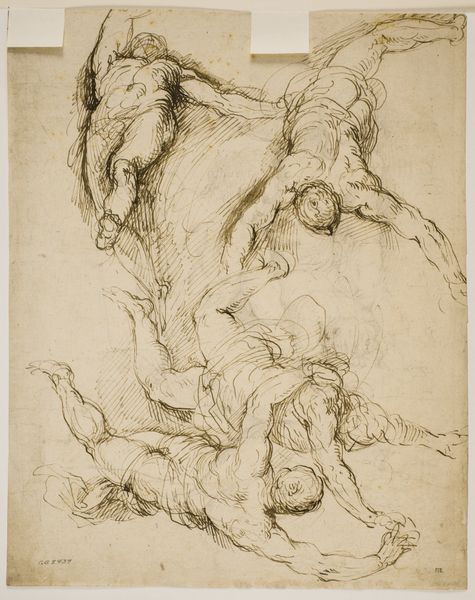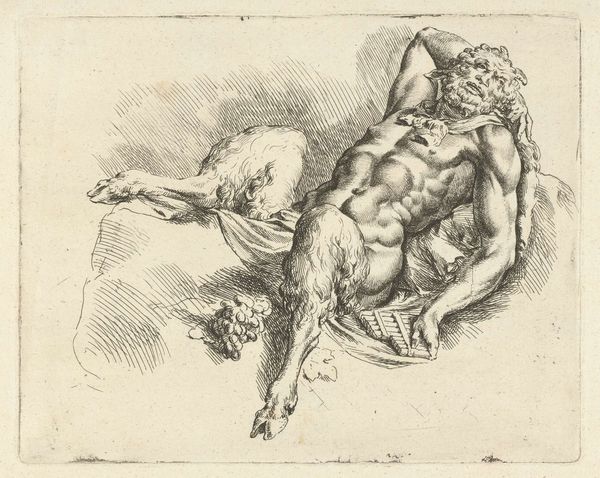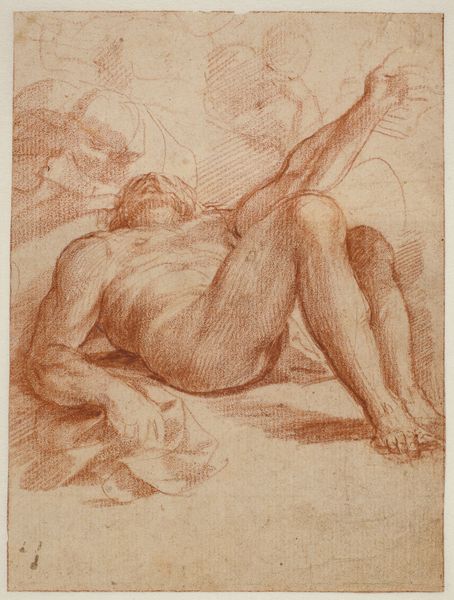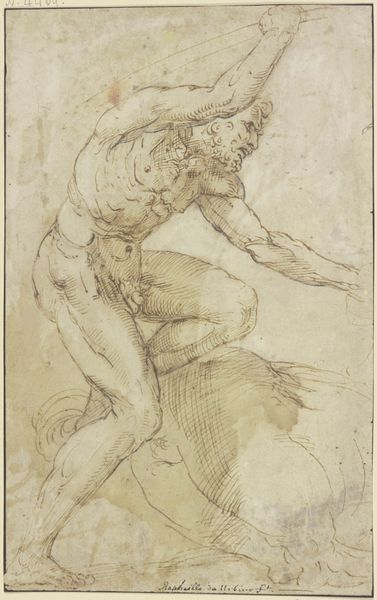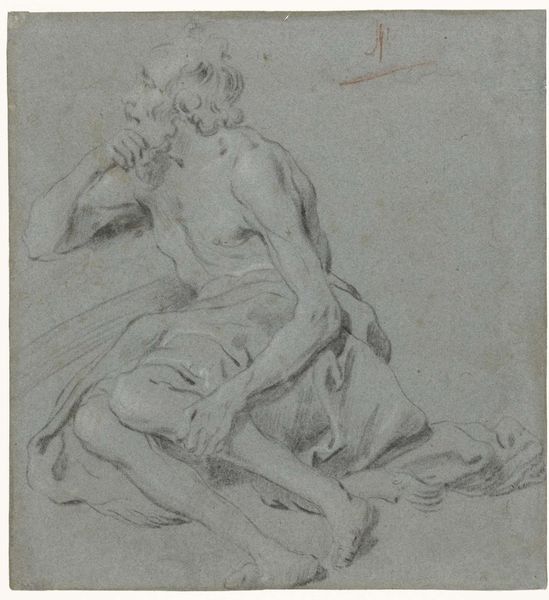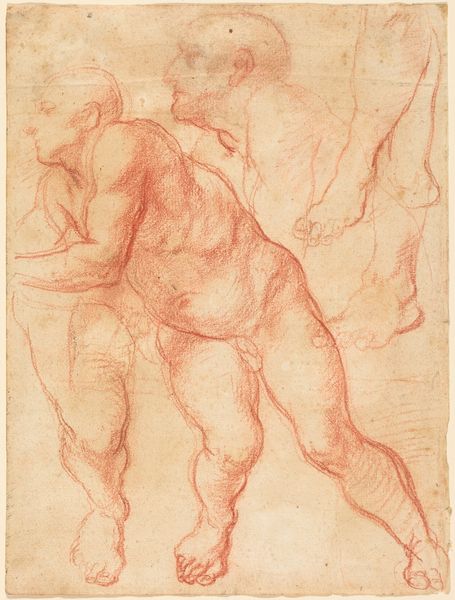
drawing, print
#
drawing
#
toned paper
#
light pencil work
# print
#
pencil sketch
#
charcoal drawing
#
possibly oil pastel
#
charcoal art
#
pencil drawing
#
underpainting
#
pencil work
#
male-nude
#
watercolor
Dimensions: 6 x 5-3/4 in. (15.2 x 14.6 cm)
Copyright: Public Domain
Editor: Here we have "Sisyphus and Tantalus," an intriguing drawing, perhaps a print, created sometime between 1500 and 1600 by an anonymous artist. It’s currently housed here at the Met. The figures, rendered with light pencil work on toned paper, evoke a feeling of weariness and struggle. What compositional elements strike you most forcefully? Curator: The linearity predominates, doesn’t it? Notice how the artist uses line weight to define form and volume. The cross-hatching in areas like the figure's back suggests depth, while the sparser lines elsewhere create a sense of flatness. Editor: Yes, I see what you mean! It’s almost as if the artist is playing with our perception, drawing our eye to certain points and away from others. Curator: Precisely. The composition leads the viewer’s eye deliberately. The darker contour lines of the figure kneeling give it visual weight, whereas the other's is faint. Furthermore, what about the placement? Observe the almost symmetrical arrangement and division between the upper and lower figure, consider what sort of a relationship this imposes upon them? Editor: Hmm, I hadn't noticed the near-symmetry before, but it makes me think about their shared torment and fates. So the formal elements reinforce the theme? Curator: One might say that the forms echo the content. It also hints at a lack of individual identity, the reduction of body through eternal burden. Now, if it had displayed, for example, more assymetry through shading, how might that affect your reading of their relationship? Editor: That's interesting to think about. I guess shading that suggests more three-dimensionality in the lower figure would visually express its isolation from the kneeling one. The artist really chose the right visual cues here to communicate their intention. Curator: Indeed. Formal analysis offers us an elegant vocabulary.
Comments
No comments
Be the first to comment and join the conversation on the ultimate creative platform.
